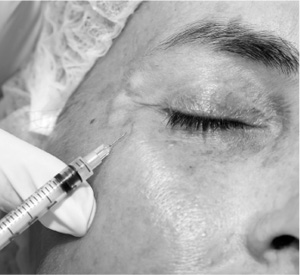Bacteria, Viruses, and ProtistsBacteria Basics |
What is Botox? |
Botox, the trade name for botulinum toxin type A, is a protein produced by the bacterium Clostridium botulinum—yes, the same acute toxin that causes botulism. In this case, the botulinum toxin is purified and sterilized, then converted to a form that can be injected and used in a medical setting.
Botox was not always associated with celebrities and anti-aging serums. It was first approved by the Food and Drug Administration (FDA) in December 1989 to treat two eye muscle disorders—uncontrollable blinking (called blepharospasm) and misaligned eyes (called strabismus). In 2000, the toxin was approved to treat cervical dystonia, a neurological movement disorder that causes severe neck and shoulder contractions. The use of the toxin for “making you look younger” came more recently. In small doses, Botox blocks nerve cells from releasing a chemical called acetylcholine, which signals muscle contractions. By selectively interfering with a muscle’s ability to contract, a person’s existing frown lines and wrinkles are smoothed out, improving the appearance of the surrounding skin. But of course, injecting such a toxin into one’s system raises concerns: The biggest problem is the possibility of an allergic reaction.

Botox injections work by introducing a bacteria under the skin that blocks muscle contractions, resulting in smoother skin.
